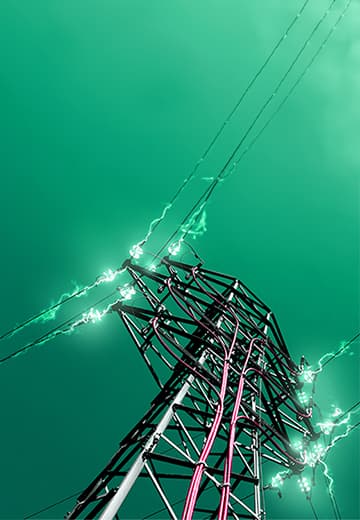

However, the global energy sector in 2023 stands at a crossroads of significant changes and challenges. On one hand, there is a sharp increase in interest in renewable energy sources, while on the other hand, discussions continue regarding traditional sources such as oil and natural gas. Expert assessments from renowned organizations indicate an increase in investment in clean energy, digital transformation in the energy sector, and the impact of geopolitical and economic factors on the global energy market. Specifically, the influence of global economic conditions, the growing production of electricity from renewable sources, and the trend towards reducing dependence on fossil fuels are the key factors shaping energy strategies for the future.
For businesses and other stakeholders, it is important to understand what will happen in the future. Therefore, we have decided to create a new section where we will gather and update information on forecasts and the current state of the energy sector in Ukraine and the world.

The current state of Ukraine’s energy sector is characterized by significant challenges and the need for restoration and repair due to military actions.
According to the World Bank:
Infrastructure damage: Ukraine’s energy infrastructure has incurred losses of USD 11 billion due to the military actions. More than 50% of the energy infrastructure has been damaged, leading to power outages across the country.
Repairs and restoration: The government of Ukraine and international partners, including the World Bank, are engaged in the restoration of the energy grid. The World Bank has allocated USD 200 million in grant financing for repairs, with the possibility of additional funding up to USD 300 million.
Reintegration into the grid: Most power stations in Ukraine have resumed operation within the grid, reducing the frequency of major outages in cities. However, damage to transmission substations continues to restrict their productivity.
Priorities for 2023-2024: Restoring the energy grid is a priority for Ukraine in 2023-2024, accounting for 11% of the country’s total estimated recovery needs.
The World Bank’s forecast
According to the World Bank’s overall economic forecast, Ukraine’s economy is expected to grow by 3.5% in 2023 and by 4% in 2024. One of the key factors influencing this growth is the stabilization of electricity supply, which may indicate certain positive trends in Ukraine’s energy sector, increased government spending, continued donor support, better harvests, and changes in the route of some exports through the country’s western borders.

According to an assessment conducted by the United Nations Development Program (UNDP), the state of Ukraine’s energy sector remains extremely vulnerable in 2023 due to prolonged attacks.
The situation with the energy system: Ukraine’s energy system keeps operating in emergency mode with limited safety margins, facing losses. Overall, 42 out of 94 (45%) critical high-voltage transformers in government-controlled territories have been damaged or destroyed by missile or drone strikes since the beginning of the current stage of the war.
Reduction in production capacity: The overall energy generation capacity has been reduced to nearly 50% of the level before 2022. Out of almost 37 GW of installed capacity, over 19 GW have been destroyed, damaged, or occupied since February 2022. The situation is further complicated by a significant reduction in maneuvering capabilities, including the loss of over 67% of thermal generation capacity.

The energy situation remains challenging due to the damage inflicted by russian missile strikes. These attacks have caused serious damage to the infrastructure, including facilities operated by Ukrenergo, thermal and hydroelectric power stations. This may lead to a potential electricity shortage during the summer period of 2023, despite the typically observed surplus capacity during this time.
Forecast from NPC Ukrenergo for 2023-2024
It is expected that the deficit in the energy system during winter will be around 2 GW, which will require importing electricity to cover. However, existing price limits do not facilitate imports due to significantly higher prices in neighboring countries. As a result, during peak load hours, Ukraine cannot cover the deficit through imports, and Ukrenergo will have to resort to using emergency assistance, which is more expensive than imports.
Volodymyr Kudrytskyi, Chairman of the Board of Ukrenergo, has noted that Ukraine will need to invest around USD 15 billion to increase the capacity and flexibility of its energy system in the coming years. These investments will be directed towards expanding wind farms, solar power plants, thermal power plants, energy storage systems, pumped-storage hydroelectric power plants, as well as the construction of new highly maneuverable thermal power plants and biofuel plants.

International Energy Agency (ІЕА)
According to International Energy Agency (ІЕА), it is expected that global demand for electricity will increase by 3.3% in 2024. This growth is measured as a rebound from the slowdown in previous years, which was caused by the ongoing energy crisis and economic downturn.
The key points of the forecast are:

U.S. Energy Information Administration (EIA)
Energy sector forecast for 2024, according to the information from Energy Information Administration the U.S. (EIA), includes several key trends in various spheres:
Electricity consumption
Increase in consumption: It is expected that in 2024, overall electricity consumption will increase by 2%, particularly in the residential sector, where people will spend more time at home, working and resting.
Renewable energy
Expansion of renewable sources: Electricity production from renewable sources is expected to increase, with a share of up to 24% of the total electricity production in the U.S. Special emphasis will be placed on solar energy, with plans to launch new capacities in 2023, which will make a significant contribution in 2024.
Fossil fuels
It is expected that in 2024, the use of fossil fuels as a source of electricity production will again decline. The share of natural gas as a source of electricity production is projected to decrease from its peak of 42% in 2023 to only 41% in 2024. In Texas alone, natural gas production is expected to decrease from 46% in 2023 to 41% in 2024. On the other hand, coal is forecasted to decline from 16% in 2023 to 15% in 2024. Coal production will amount to 585 million tons in 2023 and is projected to decrease by more than 100 million tons in 2024. This is due to a decrease in demand from the U.S. electricity sector.

International Renewable Energy Agency (IRENA)
International Renewable Energy Agency (IRENA) foresees that accelerating energy transitions towards climate security could increase the global economy by 2.4% compared to the expected growth of current plans over the next decade.
The Agency’s 1.5°C Plan envisages the creation of up to 122 million energy-related jobs by 2050, more than doubling today’s 58 million. Renewables alone will account for over a third of all energy-related jobs, employing 43 million people worldwide, contributing to post-COVID-19 recovery and long-term economic growth.
The forecast represents a specific practical set of tools for a complete reorientation of the global energy system.
There is a consensus that an energy transition based on renewable energy sources and efficient technologies is the only way to limit global warming to 1.5°C by 2050. As the sole realistic option for a climate-safe world, IRENA’s vision has become mainstream.
The IRENA forecast considers the energy transition a significant opportunity for businesses, particularly for the private sector, leading to changes in financing. It is projected that the share of private debt capital will increase from 44% in 2019 to 57% in 2050, exceeding current plans by 20%. This shift will help attract more long-term financing for renewable energy projects, while investments in fossil fuels will become less attractive to private financiers.

The forecasts of McKinsey&Company are showing that significant investments will be needed to support the development of renewable energy and ensure an adequate supply of fossil fuels to complement these sources. It is expected that overall investments in energy will increase from USD 1.5 trillion in 2021 to USD 2–3.2 trillion by 2040. Although this is a substantial increase, the level of investment is likely to remain stable relative to GDP.
Forecasts from McKinsey&Company:
The dominance of renewable sources: renewable energy sources aim to encompass 45% to 50% of global production by 2030 and 65% to 85% by 2050. Solar and wind energy will be the main contributors to this growth.
The Role of CCUS Technologies: the introduction of nuclear technologies and carbon capture, utilization, and storage (CCUS) could alleviate the burden on the development of renewable energy sources, but this depends on the political landscape and future cost developments.
It is expected that coal (without CCUS) will gradually phase out of production. Electricity generation from gas-fired power stations, hydrogen-ready, supporting grid stability, is likely to increase.
Investments in the energy sector: significant investments will be needed to support this transition, with expected annual growth in energy sector investments between 2% and 4% per year roughly in line with global GDP growth — reaching between USD 2 to USD 3.2 trillion by 2040.

Our forecast for Ukraine
The war in Ukraine has a significant impact on the country’s energy sector, particularly due to direct and indirect consequences such as infrastructure destruction, supply chain disruptions, and changes in energy policy. One of the most tangible consequences of the war is the widespread destruction of the energy infrastructure. This includes damage to power plants, electrical grids, gas pipelines, and other key facilities. The ruined facilities not only require significant expenses for restoration but also result in the loss of production capacity.
Support from European partners in the energy sector is of great importance for Ukraine in 2023. However, the reduction and delays in support, unfortunately observed, along with significant accumulation of debts among market participants, may influence the government’s decisions regarding the reduction of subsidies for vulnerable populations and the increase of certain tariffs, which will impact the rise in electricity prices. We anticipate that a significant increase in prices in the market is one of the realistic scenarios; however, the situation is more within the realm of politics than economics.
In our opinion, in the short-term perspective, the main factors that will influence the sector in Ukraine are:
According to our analysis regarding Ukraine, we anticipate that in the coming decade, the key directions for the development of the country’s energy sector will be focused as follows:
This forecast reflects our assessment of current trends and strategic directions that will shape Ukraine’s energy sector in the future.

Development of Ukraine’s Energy Sector in 2023: main priorities of the Ministry of Energy
In 2024, Ukraine will focus its efforts on key areas in the energy sector, namely: the development of the nuclear industry, decentralization of electricity generation, and strengthening physical protection of energy infrastructure facilities. This was announced by the Minister of Energy of Ukraine, Herman Halushchenko.
Nuclear energy development: collaboration with the U.S. and other countries
The plans of the Ministry of Energy include active cooperation with the United States on projects related to nuclear energy development, as well as with the United Kingdom, Canada, and the U.S. in the uranium industry. The goal is to displace russia from the global nuclear fuel markets.
Progress in 2023: breaking the russian monopoly
In 2023, significant steps were taken in these areas. One important achievement was the development of a new type of nuclear fuel for VVER-440 reactors jointly with the American company Westinghouse and experts from the National Nuclear Energy Generating Company “Energoatom”, which disrupted the russian monopoly in this sphere.
Decentralization of energy generation: development and strengthening of infrastructure
One of the priorities is decentralization and increasing the capacity of distributed electricity generation, including the installation of gas turbines. This will contribute to the improvement of efficiency and reliability of electricity supply in the country.
Ensuring safety and repair campaign
Another important direction is the continuation of the repair campaign, replacement of high-voltage transformers at substations, and improvement of protection systems. This will ensure greater stability and safety of Ukraine’s energy infrastructure.
Therefore, in 2024, the Ministry of Energy of Ukraine will focus on the development of nuclear energy, decentralization of energy generation, and ensuring the security of critical energy infrastructure facilities. This will contribute to the development and reliability of the country’s energy sector.

Tetiana Demchenko